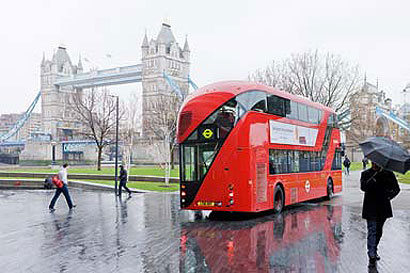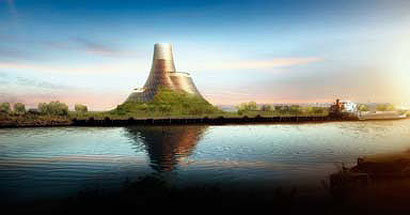|
|
||
|
To the outside observer, 2012 appears to have been very much Thomas Heatherwick’s year: a large exhibition at the Victoria and Albert museum marked his ascendancy into the establishment of British design, while his reworking of the London Routemaster bus is going into large-scale production, a seal of approval for the politically fraught reworking of a truly iconic design. But most significant of all was his design for the Olympic Cauldron, the ignition of which was watched by almost one billion people across the world; an unbelievable level of exposure. “The cauldron had this job to do in the relay race that was the Olympic opening ceremony,” says Heatherwick in his bustling London studio, now 85 strong. “It felt like we were doing the home leg, you know, and there’d been this fantastic ceremony, and we had the job to bring it home at the end.” As Icon has discussed with the manufacturer, Stage One (Icon 112), it was a resounding success: an ingenious end to a spectacle that managed to please just about everyone – a near-impossible task. “We felt the responsibility nationally, in that how could you follow on from what Beijing did?” Heatherwick says. “We felt this great duty not to let down the fact that Britain has some of the best imaginative minds on the planet, who have chosen to base themselves here.”
Heatherwick is careful not to describe this year as an endpoint. These three projects may have come along all at once, but that’s partly down to chance: “The thing with projects is that you work on them for many years, and you can’t be in control of when they all finish,” he says. “It looks like you’ve suddenly been busy at one particular point, but you’ve been working on things for next year and the year after that.” One thing that has become obvious to him this year is a desire to take on further institutional challenges. “I grew up at a time when I was resigned to the fact that anything that had anything to do with government would surely be ruined, but I felt that it was possible with the cauldron and the bus for that not necessarily to be the case – and they were facilitated by government; they were our collaborators.”
Projects currently in the works include a gin distillery for Bombay Sapphire at a ruined mill in Hampshire, a university building in Singapore, and some that Heatherwick simply isn’t allowed to tell us about (he had to keep silent about the Olympics when we interviewed him earlier this year). If one thing is changing, it’s that the studio’s workload is less about single events, and more about creating lasting urban experiences, something for which Heatherwick has a renewed admiration. “I don’t think there’s enough appreciation of how hard the designer of a building has to work to end up with something of quality,” he says. Does that mean he’s lining up to join the starchitect league? Not likely: “I don’t feel that the studio’s here to express me. I feel we’re trying to spot where there are chances to do things that otherwise wouldn’t happen.” |
Image Iwan Baan, Elena Heatherwick, Heatherwick Studio
Words Douglas Murphy |
|
|
||





















